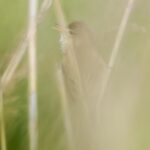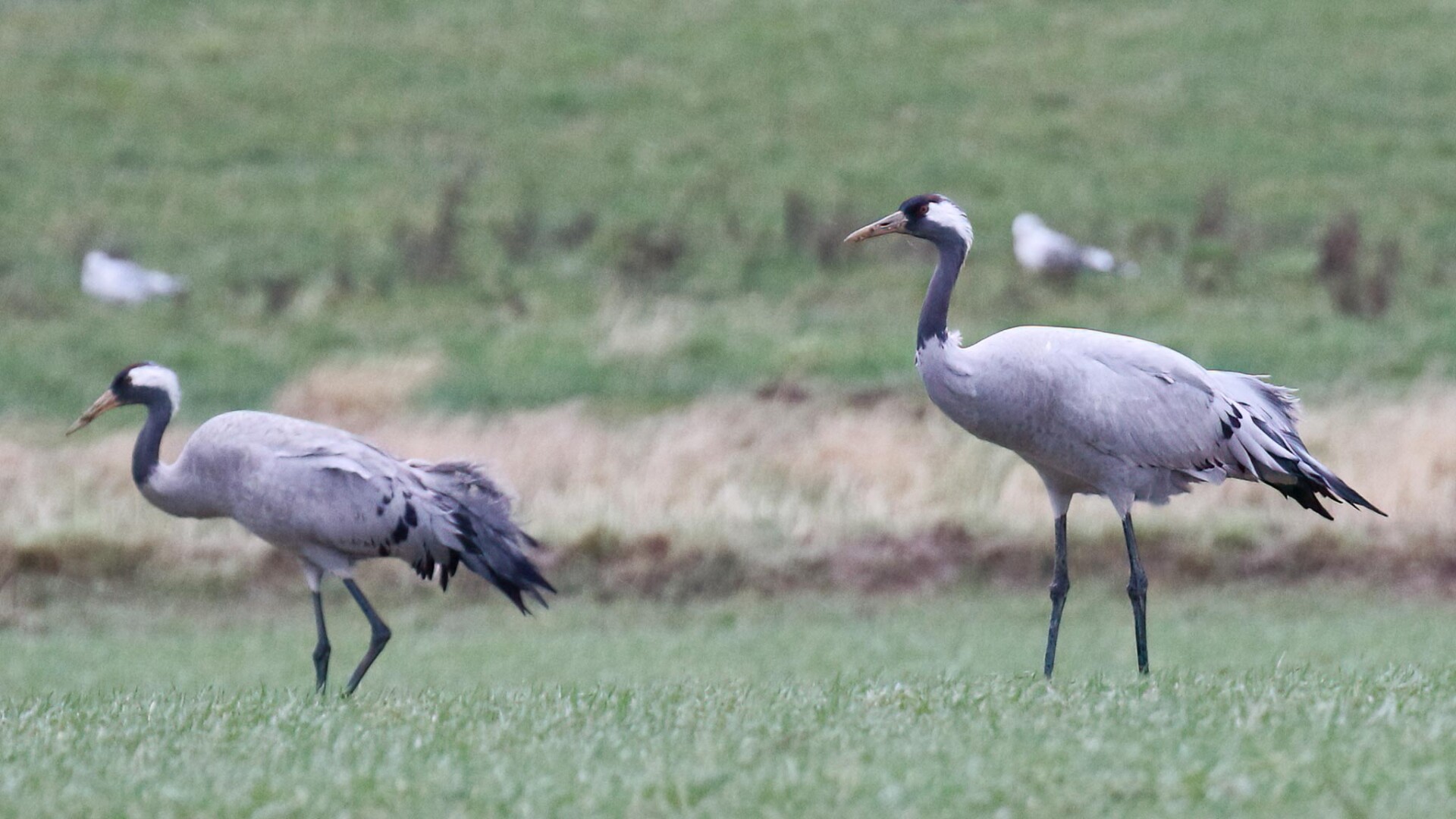Day 4 of a 4-day Autumn Migration tour. The weather looked like it might be very difficult today, with Storm Ashley forecast to lash the UK with heavy rain and high winds. Thankfully, once again, it was nowhere near as bad as predicted, although it was still damp and decidedly breezy! Not ideal, but we made the best of it.
We headed over to Titchwell first thing, thinking we might need to take advantage of the hides, but it was dry when we arrived. A quick look round the overflow car park failed to produce any obvious migrants. Scanning from the gates overlooking the paddocks, we could see some distant small groups of Chaffinches coming in over the Brancaster saltmarsh and Willow Wood, fresh arrivals in off the north sea from Scandinavia. Several lines of Golden Plover flew high overhead calling.
Heading into the reserve, we cut round via Fen Trail. There were a few Chaffinches calling in the sallows and a group of Goldfinches feeding in the alders. A couple of Siskins dropped in too. A mixed flock of tits was in the trees as well, but we couldn’t find anything else with them, before they disappeared in deeper. A Great Spotted Woodpecker called nearby.
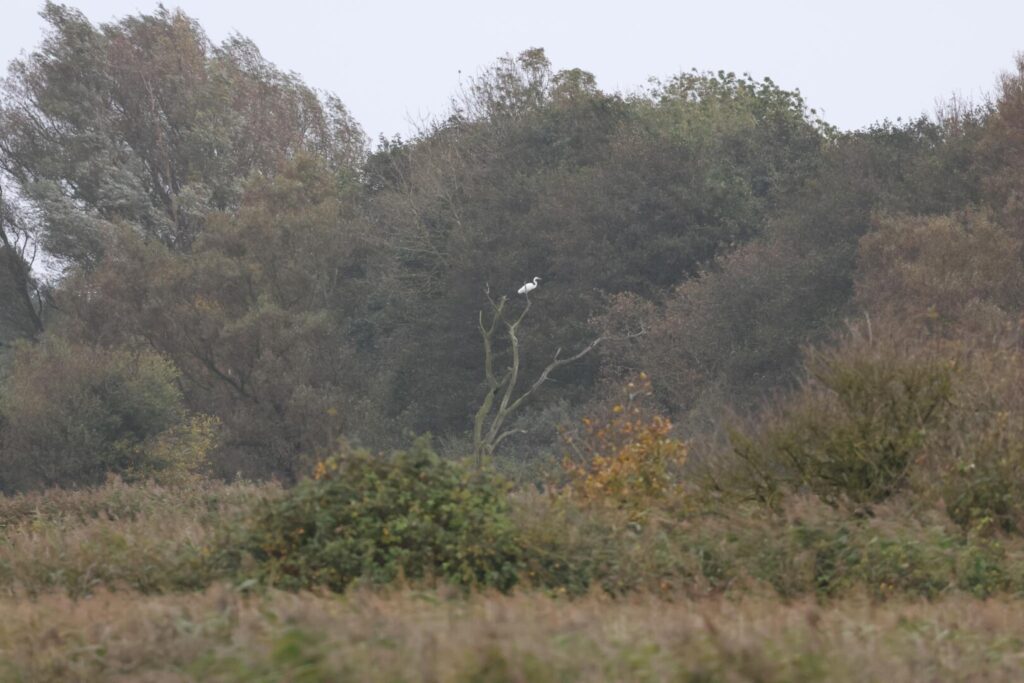
We cut round via Meadow Trail and back out onto the main path. Out of the bushes, we could see a Great White Egret perched in one of the dead trees at the back of the reedbed and a second flew across and dropped down into the reeds. A couple of Marsh Harriers were hanging in the breeze over by the east bank too.
There were still a few Chaffinches coming in over the back of the reedbed, and small numbers of Starlings passing west. There were obviously some Skylarks moving again too today, we could hear them calling overhead from time to time. But as usual it was hard to tell which were on their way somewhere and which were local birds.
It was a big high tide today and the Thornham saltmarsh was completely covered with water. A Great White Egret flew over us and dropped down into the flooded grass, where we had a very good view of it. A couple of Marsh Harriers quartered out over the bushes which remained above the tide and a Sparrowhawk landed on the concrete bunker in the middle briefly. A single Chinese Water Deer was feeding in the middle of the Thornham grazing meadow.
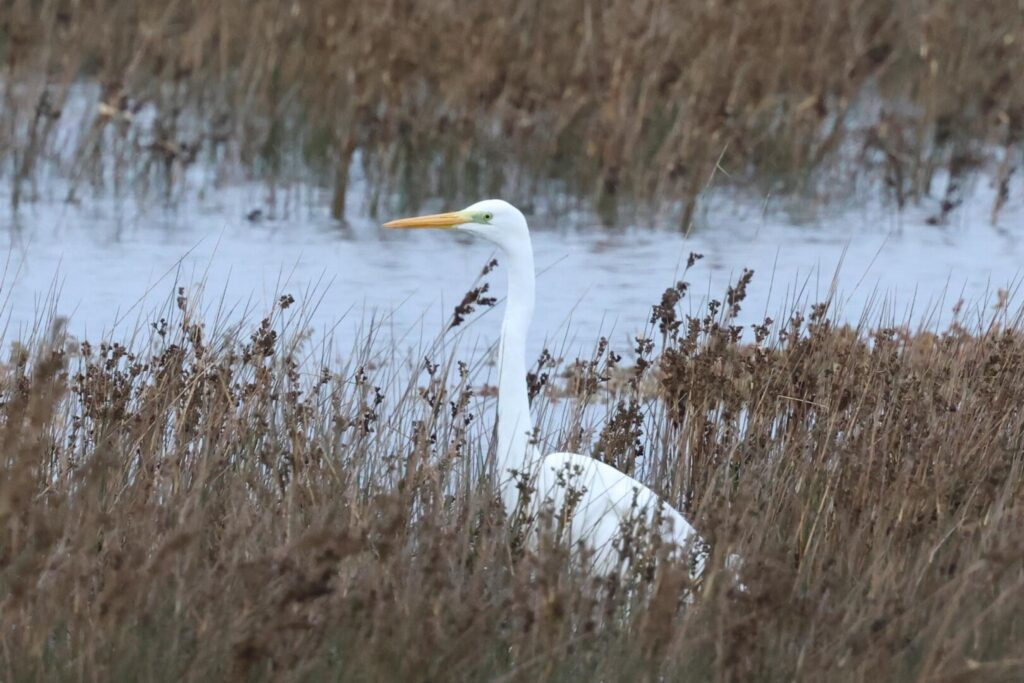
All the Golden Plovers erupted from the Freshmarsh and whirled round. At the same time, two Spoonbills appeared as well, flying straight towards us. They turned and headed out over the saltmarsh, both juveniles with black in the wing tips. We could hear Greenshanks calling too and four flew up and off following the Spoonbills.
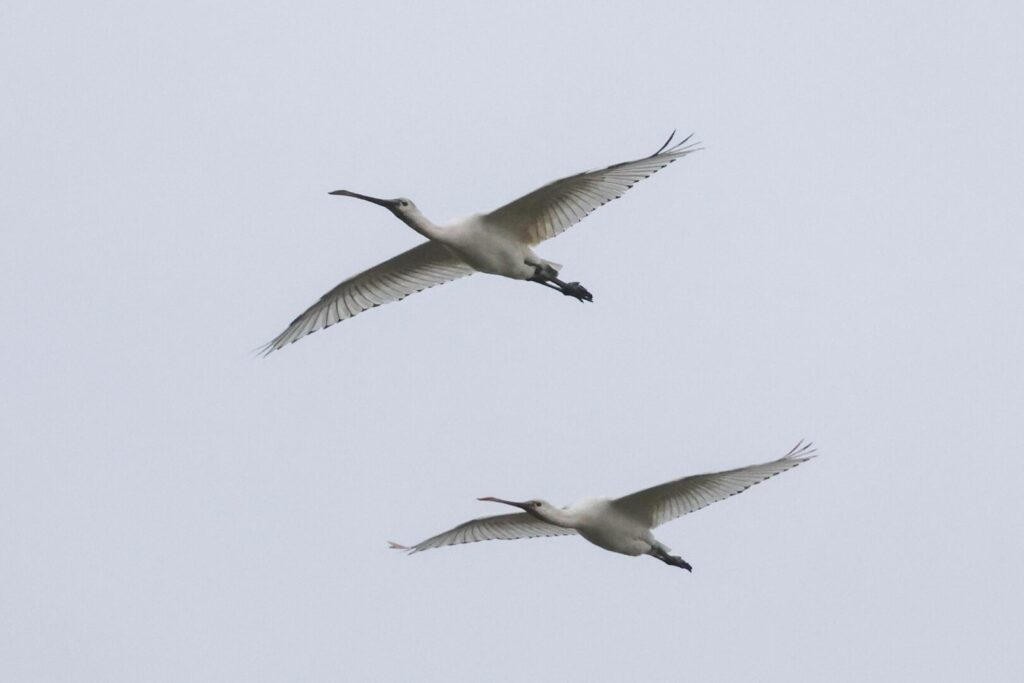
The water levels are high on the Freshmarsh at the moment and there is not a lot of exposed mud. Most of the birds seemed to be over on the far compartment, where the water was a bit shallower and they were also clustered closer to the reeds to get out of the wind. We could see at least five more Spoonbills roosting in with a large group of Black-tailed Godwits. There were more Avocets over the back too and at one point, when they flew round together, we counted at least 55 of them. A single Pintail was out on the deeper water in front.
From further up, by the bund, we could see that a lot of the Golden Plover had settled again on the grassy island in front of Parrinder Hide. A couple of Common Snipe were visible from here too, sheltering on the back edges of the flooded islands on the south-western compartment, along with several Lapwings.
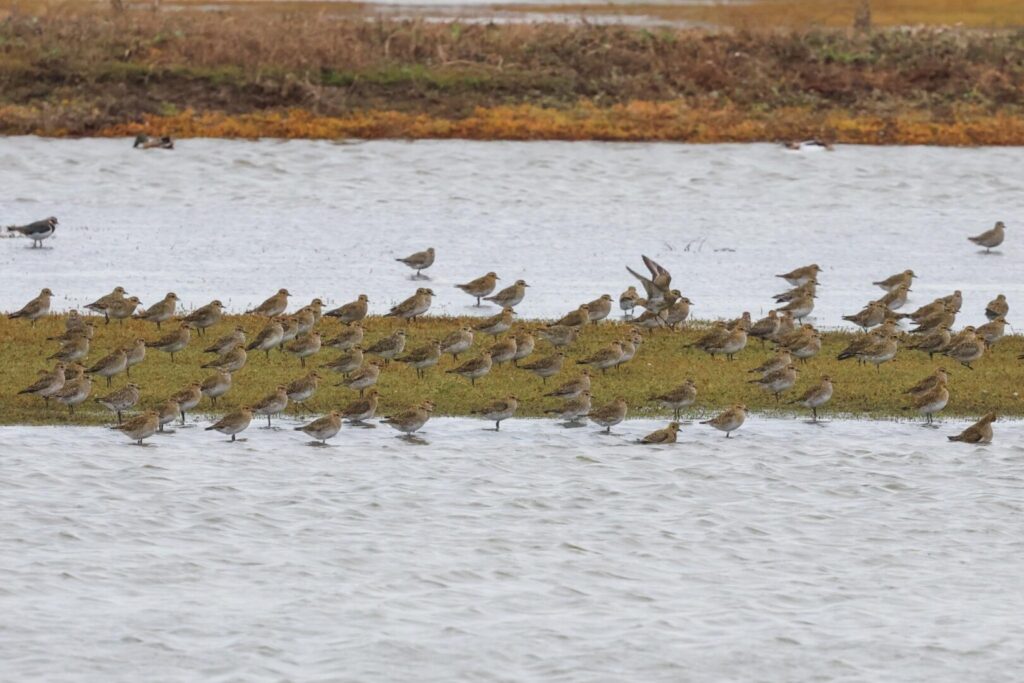
With the weather still holding, we decided to head straight out to the beach first. The Volunteer Marsh was completely underwater due to the high tide. A Scandinavian Rock Pipit flew across and landed on the back of the Parrinder bank behind the bunker, where we could get it in the scope for a closer look. The water level was high on the Tidal Pool too, but there were still some islands exposed at the back and two Greenshank were roosting on there. A Reed Bunting was feeding in the shelter of the path.
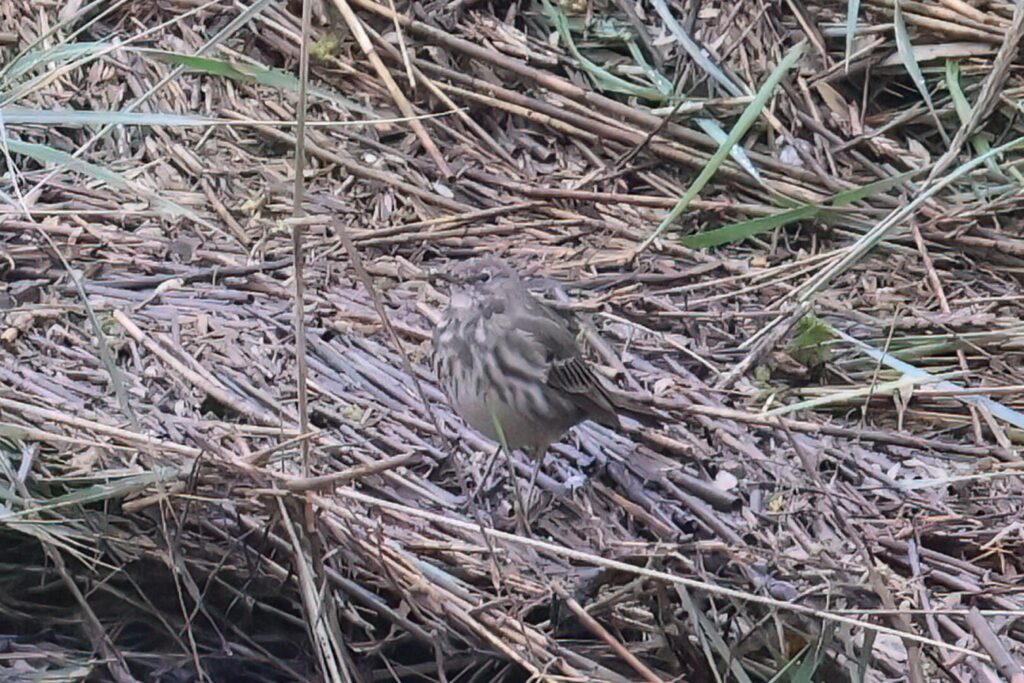
Out on the beach, we were able to get into the shelter of the dunes, out of the wind. The tide was already going out and the waders were beginning to return to the sand. There were several Bar-tailed Godwits and Oystercatchers already out on the beach. A flock of Sanderling was feeding very busily and eventually worked their way right past in front of us.
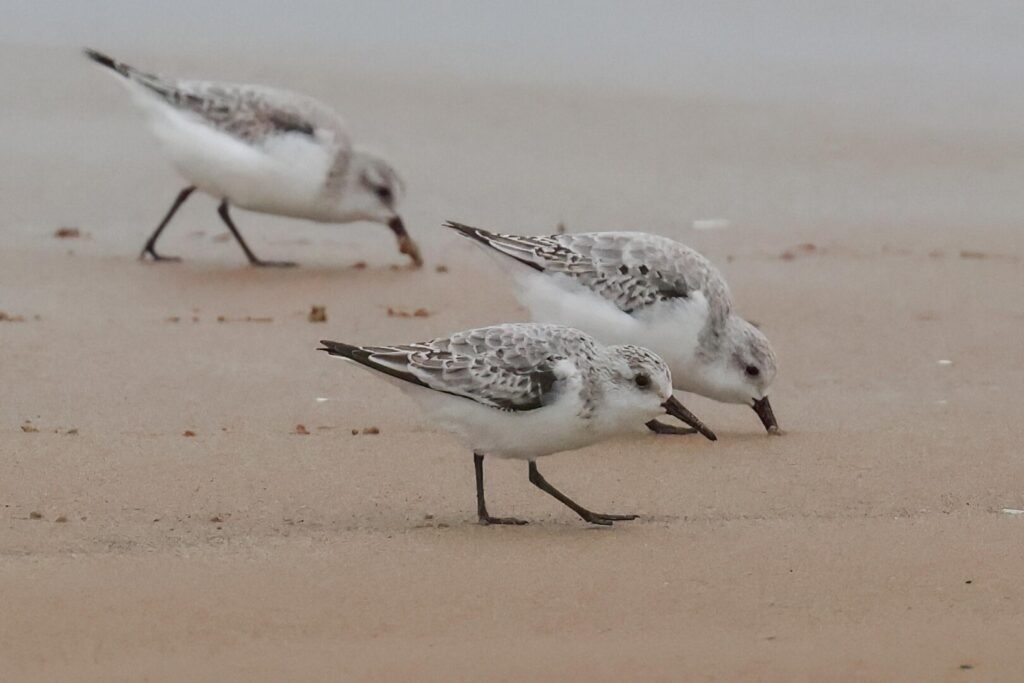
There had been a Black-throated Diver offshore earlier but it had apparently drifted quickly east towards Brancaster and was lost to view. We could still see several Red-throated Divers, including a couple still largely in breeding plumage, though their red throats were hard to make out in the dull light today. There were quite a few Great Crested Grebes out on the sea too.
We picked up a Razorbill, which was diving fairly close in with the divers, and a more distant drake Eider. Several small groups of Common Scoter were offshore too, predominantly black drakes with the yellow stripe down the top of their bills. A party of eight Red-breasted Mergansers flew past and landed further out. A single Guillemot appeared on the sea too.
There was plenty to see here this morning and it was nice and sheltered here. Eventually our patience was rewarded when the Black-throated Diver reappeared. Unfortunately it was much further out now and hard to see, diving all the time and reappearing in a different place each time it resurfaced. At one point, it came up next to the Red-breasted Mergansers, when it was easier to see. But when it dived again, we lots track of it. With the wind starting to pick up a little, the sea had started to get choppier.
There had been a couple of Snow Buntings here earlier in the week, but we assumed they would have been pushed off the beach by the high tide this morning. We were hoping they might come back in, but it didn’t help that a succession of people were walking up down along the top of the beach. Scanning away to the west, we also found a Peregrine perched on a piece of driftwood up by the dunes towards Thornham Point. It was busy feeding on something it had caught. That would be enough to scare any Snow Buntings away from that end of the beach too.
As we started to make our way back, we could feel that the wind had picked up as we came up out of the lee of the dunes. Heads down, we walked back into the wind and diverted down along the path to Parrinder Hide. We arrived just in time, as finally it started to rain properly.
A Black-tailed Godwit was feeding in the water right in front of the hide. In non-breeding plumage, we could see its solidly grey-brown upperparts, very different from the Bar-tailed Godwits we had been looking at earlier. At one point, a second Black-tailed Godwit flew in and the two them squabbled for a minute or so, one flying up and trying to land blows on the other. Presumably arguing over who had rights to feed here.
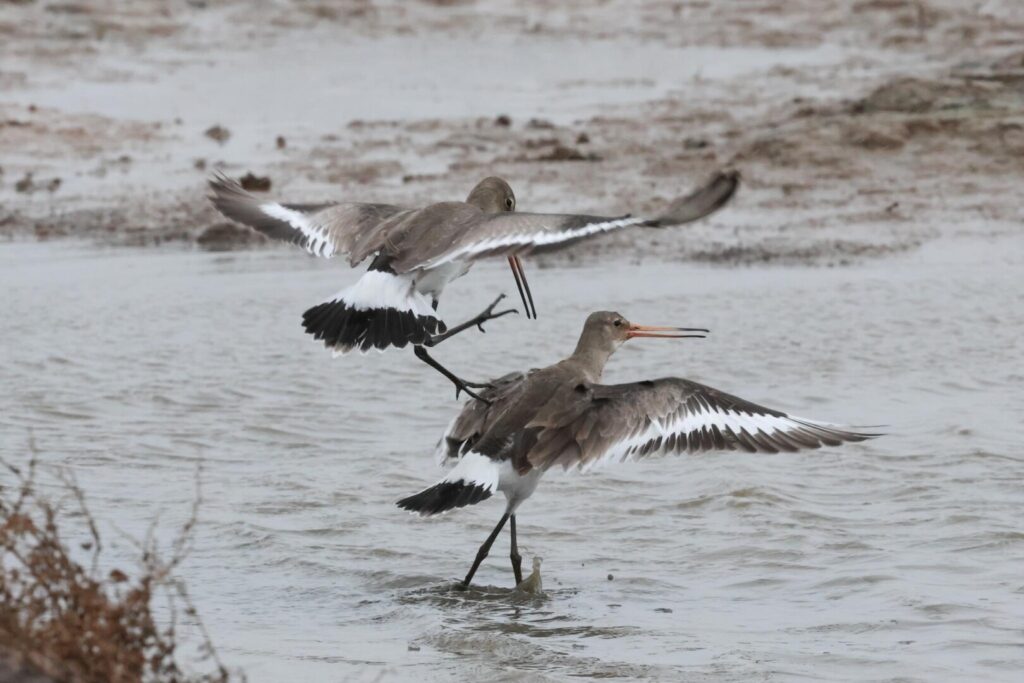
There were more Black-tailed Godwits further back, as well as the Avocets still. A Grey Plover dropped in on the grassy island in front of the hide with a single Ringed Plover. Three Common Snipe were feeding on the edge of the bund. We couldn’t see the escaped Black-winged Stilt at first. It eventually emerged from where it was hiding, out of view in the north-east corner, just as we were wondering where it had gone.
Another Scandinavian Rock Pipit dropped in on the bricks on the nearest island and then proceeded to have a bathe in one of the small puddles in the mud in front. The Golden Plovers were still here and looking very smart, on the island in front of the other side of the hide.
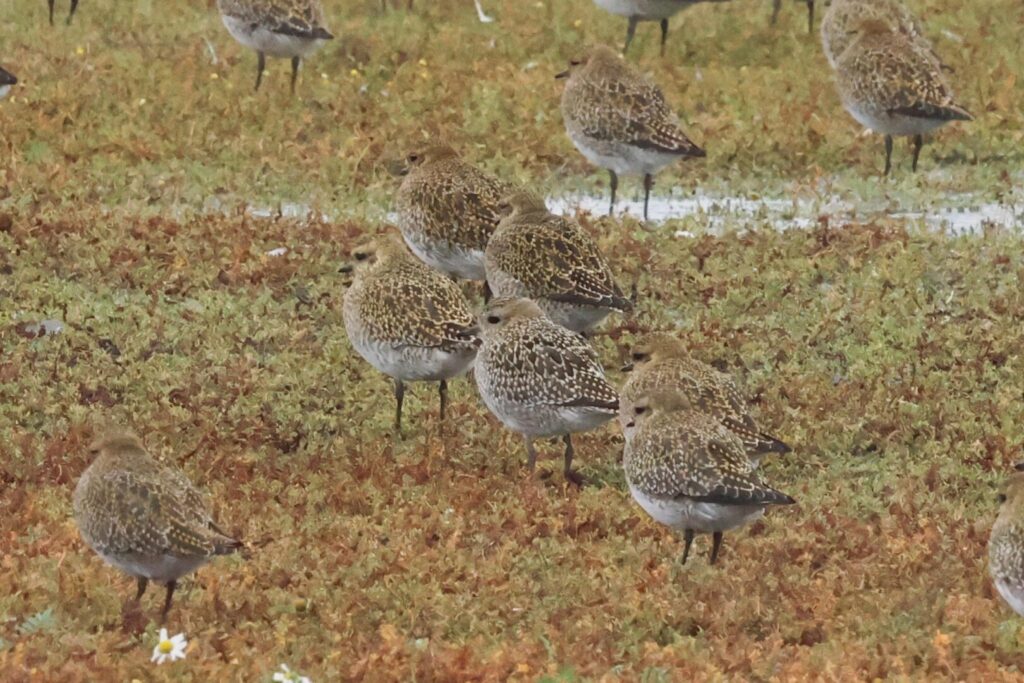
The rain quickly stopped and it was time for lunch. We made our way back to the Visitor Centre where it was dry enough again now to eat outside on the picnic tables. A tree had come down across the access road. Thankfully we were not planning to leave yet, but the staff had opened up the gates to the tank road so people could get out. One of the wardens had been called in to clear it.
After lunch, we headed out again, round on Fen Trail. There were a few more Chaffinches calling up in the tops of the sallows now. The Tawny Owl was in its usual tree but is still hard to see at the moment, given that a lot of the leaves are still on the trees. We eventually managed to see most of it when the wind blew and the branches parted from time to time.
We pressed on to the screen overlooking Patsy’s Reedbed where it was thankfully quite sheltered. There were a few Coot and Gadwall out on the water, but the wind was lashing the reeds over the far side. We had half hoped we might get lucky and find a Bittern here this afternoon, but it looked unlikely now, in these conditions.
As we sat and scanned, we quickly realised there were lots of Chaffinches moving, more than there had been this morning. A succession of flocks flew over and off west, many of about 10-12, but some larger groups of 50+ too. There were easily 250-300 Chaffinches which passed overhead just as we were sitting there. A small group of hirundines appeared overhead too, a mixture of Swallows and House Martins, at least three of each. There are still a few late ones, making their way down to Africa for the winter.
Several different Marsh Harriers were now starting to gather over the reedbed. We saw a couple of different females, a grey male and a 2024 juvenile. The latter came across over the water flushing all the ducks and Coot. It then spent a couple of minutes hovering over the reeds on the near side and swooping down occasionally. It was hard to tell if it had seen some potential prey there or was just thinking about landing.
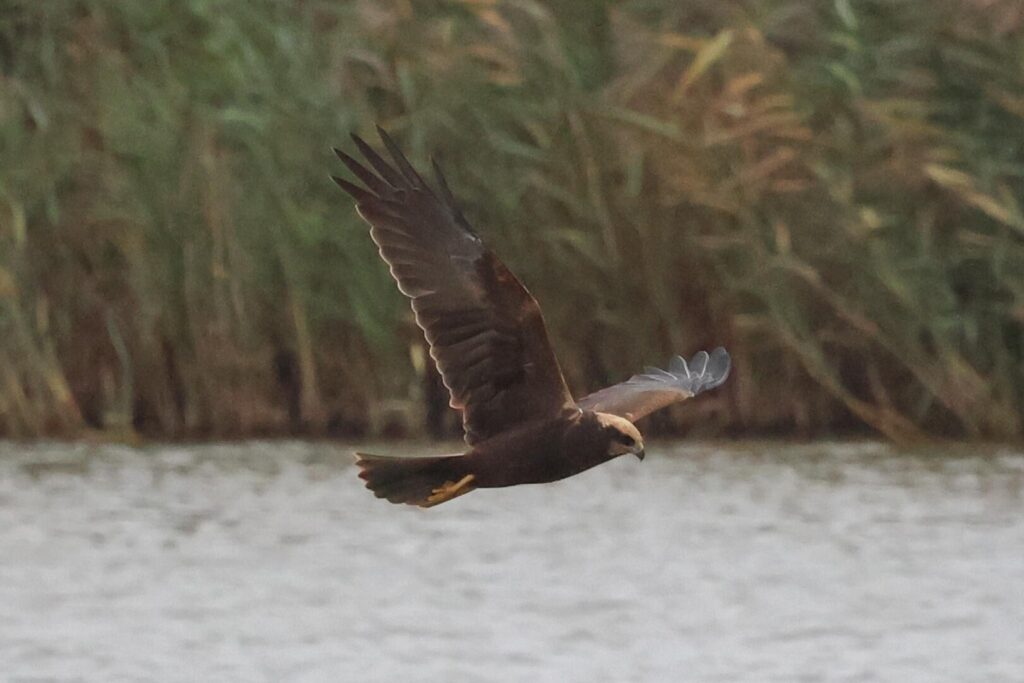
We had been lucky with the weather, but now it started to rain again so we decided to head back. Already by the time we got to the Visitor Centre we could see the skies clearing from the west. We decided to have a quick look round at Hunstanton to finish the day.
It was still very blustery on the prom but the sun was out when we arrived. We could see a huge flock of Common Scoter out on the water but too distant to make out if there was anything else with them, particularly with the scopes shaking in the wind.
There were lots of Oystercatchers, Redshanks and Curlews feeding out on the beach. Several Turnstones were picking around too, and a few Sanderlings and Knot flew past. There was a lot of disturbance though, lots of people seemed to have come out for a walk as the rain had stopped and were walking around on the beach and the rocks. We were hoping the Purple Sandpiper might still be feeding out here, but there was no sign of it.
Several small flocks of Chaffinches flew past over the beach, birds still arriving from the continent and making their way in. Autumn migration in action. Sadly it was time for us to call it a day and head back.
